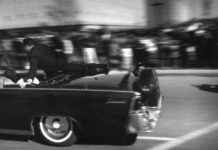The history of a country can be traced in the names of its perfumes. During the reign of the Romanovs, before they were executed, Russian stores sold Aroma of Love, Bouquet, Spring Flowers, the usual. The revolution arrived and the fragrances became Bolshevistized, Red Poppy, New Life, Golden Spike, and already after the First Five-Year Plan of the USSR (1928-1932), they responded to a delirious communion of politics and marketing: Pioneers, Tank, Syndicalist and …Our Response to the Koljós Peasants, Greetings to the People of Cheliuskin… The Koljós would undoubtedly be very productive, but the name could never compete in a marketing campaign with a Soir de Paris, or a Champs-Èlysées , For example.
And yet there was a time when the flagship perfumes of the West and the socialist world, Chanel No. 5 and Moscow Red, faced each other, a period that historian Eric Hobsbawn called “the time of extremes,” in which Coco Chanel She was already one of the best-known women in the world, while almost no one has heard from Polina Zhemchúzhina-Molotova, responsible for the factories from which Red Moscow came out, outside the USSR. Nor a business that would seem as unsoviet as perfumes, toiletries and cosmetics.
Yes, a cultural war was fought there too, with imperial soaps renamed October when their manufacturer, the Brokar company, was state-owned in 1917; Brokar in turn received different names depending on the five-year periods of production and politics, some as uninspiring as the State Trust for the Fat and Bone Processing Industry.
The law was made, the trap was made, there too, because the cosmetic conglomerate would be known as TeZhé, pronounced tejé, in the French style. The historian Kart Schlögel explains in the recent and extremely interesting historical essay The Scent of Empires. Chanel Nº5 and Moscow Red (Cliff), the background of the Soviet perfume industry and its relationship with the West, which in this context means France. A connection so close that it links the two famous perfumes, both still on the market, although if you want to know what the USSR smelled like you won’t completely get it, because the formula has changed since then. Because the secret, again of both perfumes, is in their formula. And it is what connects them.
As if it were a tree, or a dynastic story, two branches separated from the common trunk, a perfume created in 1913 on the occasion of the Romanov tercentenary, the Bouquet Préféré de la Emperatrice, and which was the first to change its name, when in 1914, with the war, it became Rallet Nº1, the name of the manufacturer, much more neutral. One of the creators of it, the perfumer Ernest Beaux, fled to France after the revolution; In 1920 he presented a series of ten tests based on it, from which Coco Chanel chose number 5 for his perfume. It was what designer Karl Lagerfeld called the “Russian connection.”
Auguste Michel, who had had access to the Bouquet, also worked among the Rallet stills. Michel moved on to the Russian company Brokar, and in 1925, with Brokar already expropriated, he created the legendary Krásnaia Moskvá, Red Moscow. Well, the perfumes are legendary and the history of their creations is legendary, because there are different versions, as many as there are smells.
TeZhé, the cosmetics giant of the USSR, was first tasked with supplying hygiene items for Soviet homes and during the war for soldiers, but part of it became a kind of LVMH, Soviet-style luxury, with Red Moscow as its vessel. badge. At the head of the conglomerate was Polina Zhemchúzhina, wife of Minister Vyacheslav Molotov, a convinced Stalinist, despite which she was a victim of the purges. It was the way to sanitize politics. Krásnaia Moskvá briefly stopped production after the fall of the USSR, but later returned. The nostalgia market is very profitable.
Karl Schlögel The Aroma of Empires Trans. Francisco Uzcanga Meinecke Cliff 192 pages 18 euros
























